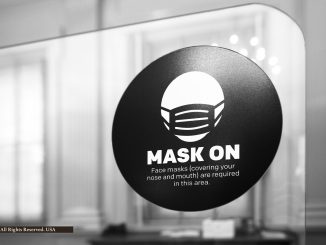
From the Editor—
It’s become increasingly common to hear presidential candidates’ positions on Roe v Wade dismissed as a non-issue, arguing that it is “settled law.” [1-4]
I’ve often questioned the fundamental premise of this debate — for both sides. We’re talking about a Supreme Court Opinion here. The United States Constitution makes it clear that laws come from the legislative branch. This was also covered in an episode of Schoolhouse Rock as well for those who eschew reading old government documents. [5-11]
If you really want to settle matters of law related to abortion, Congress is the proper mechanism of leverage in Washington. I can’t remember a time that’s been substantively done since I cast my own first vote for president in 1984 at the original Lodi Township Hall. [12-14]
Rather all smoke, no actual fire.
Sea change passage of the “Reproduction Health Act (RHA)” in New York will, I think, not only change the reality of abortion dialogue, but make it a rooted point of contention in the 2020 election cycle. Up and down the ticket. For both state and federal races. [15]
New York legislation begat initiative in Virginia. Ohio countered, polar-opposite. See “Bill of Rights” and Tenth Amendment to the Constitution. Prior to Roe v Wade, “states determined the legality of abortion. Through the 1960s, 44 states outlawed abortion in nearly all situations that did not threaten the life or health of the mother.” Some would even argue that things are better that way. [16-22]
With all of the above in mind, I accepted an April 16 invitation from a self-identified “anti-abortion group” called “Created Equal” to look in on their scheduled exhibit at Eastern Michigan University (EMU) two days later. [23,24]
Pitched as being part of a tour of fifteen college campuses where “large signs depicting the gruesome reality of abortion” would be displayed, along with the opportunity to “engage students in conversation” about the subject, I anticipated something akin to the frequently heated back-and-forths that hallmarked similar events that I saw on The Diag as a student at the University of Michigan in the early 1980s. [25,26]
The April 18 setup took place on a well-marked sidewalk outside the EMU Health and Human Services Marshall Building. A police cruiser was conspicuously parked on the street nearby, with a uniformed officer in the midst of activity for the first hour. But the crowd never got unruly — nor did I ever see that many people stop to talk with organizers (one way or other). [27]
The weather was alternatively drizzly, rainy, and overcast with threats that rain would return.
Granted, representatives of the anti-abortion group were organized and prepared for what was anticipated to come. Everyone else, and certainly pro-choice advocates, were ad hoc. But each, based on what I’ve seen elsewhere, approached their opposition from form.
- Pro-choice advocates anchored their appeals for understanding in emotion and policy.
Where is the compassion for rape victims who’ve felt no alternative than to terminate those consequent pregnancies, only to be now re-traumatized by gruesome reminder images between college classes? What is the plan for addressing situations of poverty into which a growing number of children will be born? helping assure that their educational needs are met?
- Pro-life advocates made their strongest case by pitching science and statistics.
When does life begin and how do we know that? What does “viability” mean? How often are matters of rape, incest, and life of the mother factors in third-term abortion decisions? second-term?
I was with both sides at Eastern Michigan University for more than half of this four-hour event. Sometimes taking photographs, mostly listening. One of the more interesting things I took from that came from the ten or twenty percent of the time when each side would alter its approach to speak in the language of the other. Neither stood a chance of changing any set minds by doing this, but it did spark moments of connection. And that’s something they’ll need when they come to people who are truly on the fence.
Only time will tell if abortion becomes a key issue in 2020 political debate, as I suspect that it will — and if the landscape is going to be really different this time.
What I can say now with certainty for 2019 is that we’ll be giving it more attention here at Saline Journal.
References
- “Roe v Wade, 410 US 113 (1973)” Justia: US Supreme Court Center.
- “1973: Roe v Wade” History.
- “Roe v Wade” Encyclopaedia Britannica.
- “Collins: Kavanaugh sees Roe v Wade as ‘settled law’” Politico.
- Supreme Court of the United States (home page).
- “Jurisdiction: Original, Supreme Court” Federal Judicial Center.
- “The Constitution of the United States: A Transcription” National Archives.
- “Separation of powers and checks and balances” Khan Academy.
- “Branches of Government” United States House of Representatives.
- “15 Schoolhouse Rock Facts” Hannah Keyser (January 15, 2015) Mental Floss.
- “Three Branches of Government School House Rock” The Scholars’ Academy (February 20, 2016) Vimeo.
- “How Laws Are Made” Kids in the House, United States House of Representatives.
- “In Politics And Journalism, ‘History’ Begins Where The Presenting Party Says It Does (If Audiences Allow That)” Dell Deaton (July 27, 2018) Saline Journal.
- “The ‘New” Lodi Township Hall Formally Celebrated Its Opening Twenty Years Ago Today” Dell Deaton (July 27, 2006) Saline Journal.
- “New York abortion law: Why are so many people talking about it?” George Pierpoint (January 28, 2019) BBC.
- “Virginia late-term abortion bill labelled ‘infanticide’” (January 31, 2019) BBC.
- “Ohio is the latest state to pass a ‘heartbeat’ abortion bill. Could the legal challenges eventually upend Roe v Wade?” Doug Stanglin (April 13, 2019) USA Today.
- “Tenth Amendment: United States Constitution” Encyclopaedia Britannica.
- “The Tenth Amendment Explained: The Constitution for Dummies Series” Hip Hughes (October 31, 2013) YouTube.
- “Charts: How Roe v Wade changed abortion rights” Sarah Kliff (January 22, 2013) The Washington Post.
- “Why The Constitution’s Tenth Amendment Matters So Much” Chip Mellor and Clark Neily (April 20, 2011) Forbes.
- “Editorial: The 10th Amendment Still Gives Us the Right to Argue” Andrea Fox (December 15, 2018) Efficient Gov.
- Created Equal (home page).
- Eastern Michigan University (home page).
- “The Diag” University of Michigan.
- University of Michigan (home page).
- “Marshall Building” Eastern Michigan University.


